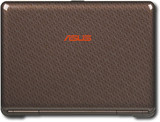Asus X83VB
Specifications

Price comparison
Average of 2 scores (from 2 reviews)
Reviews for the Asus X83VB
Source: CNet
 Archive.org version
Archive.org versionWith most of the laptops in our Winter 2009 Retail Review Roundup sporting a fairly uniform set of components and features, any entries that break the mold in a significant way have a good chance of standing out from the crowd. In the crowded Budget category of retail laptops, ranging from $600 to $899, we were pleased to find the $679 Asus X83VB-X2, a 14-inch system notable for its discrete Nvidia GeForce 9300 graphics. Sure, it's no gaming powerhouse, but casual gamers (and World of Warcraft addicts) will appreciate the extra gaming muscle in such an inexpensive laptop. Asus' X83VB-X2 is a pleasant surprise for casual gamers -- a generic-looking budget 14-inch laptop with discrete graphics.
70, Preis 80, Leistung 80
Single Review, online available, Long, Date: 03/02/2009
Rating: Total score: 70% price: 80% performance: 80%
Source: CNet
 Archive.org version
Archive.org versionA poorly designed keyboard and stiff mouse buttons prevent a higher recommendation for the Asus X83VB-X1, which is an otherwise well-built 14-inch laptop that delivers chart-topping performance for a low price.
(von 10): 7.6, Ausstattung 9, Leistung 8, Mobilität 6
Single Review, online available, Medium, Date: 11/05/2008
Rating: Total score: 76% performance: 80% features: 90% mobility: 60%
Comment
NVIDIA GeForce 9300M GS: Compared to the 9300M G, the GS has only 8 unified shaders but a higher clock rate. Therefore, the performance should be similar according to Nvidia. Supports
Hybrid-SLI (GeForceBoost and HybridPower) with Nvidia 9100M G and PureVideo HD (VP3).
Only some 3D games with very low demands are playable with these cards.
» Further information can be found in our Comparison of Mobile Graphics Cards and the corresponding Benchmark List.
Intel Core 2 Duo: This is the Core Duo and Core Solo successor with a longer pipeline and 5-20% more speed without more power consumption. As an addition to the Core Duo design there exists a fourth decoder, an amplified SSE-unit and an additional arithmetical logical unit (ALU).
The Core 2 Duo for laptops is identical to the desktop Core 2 Duo processors but the notebook-processors work with lower voltages (0.95 to 1188 Volt) and a lower Frontside bus clock (1066 vs 667 MHz). The performance of equally clocked notebooks is 20-25% lower than Desktop PCs because of the lower Frontside bus clock and the slower hard disks.
T5800: Entry level dual core processor based on the Merom core without Virtualization support and a low maximum temperature.» Further information can be found in our Comparison of Mobile Processsors.













